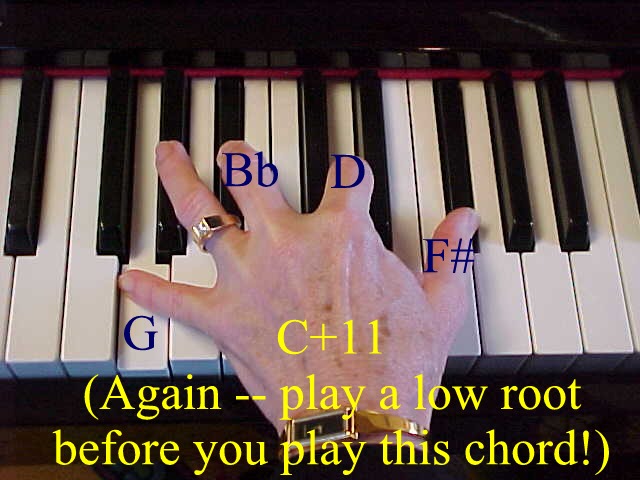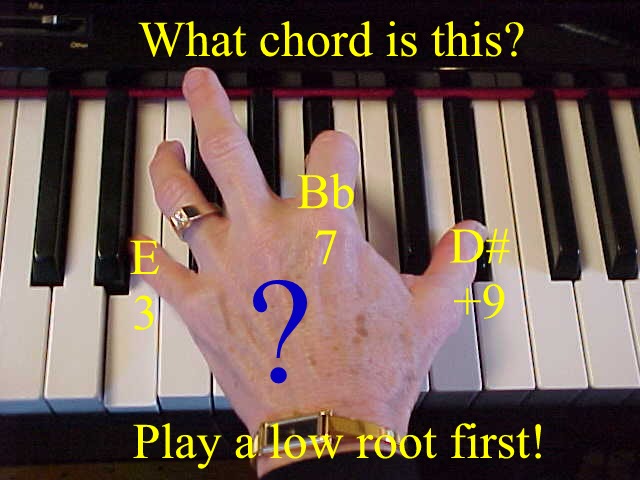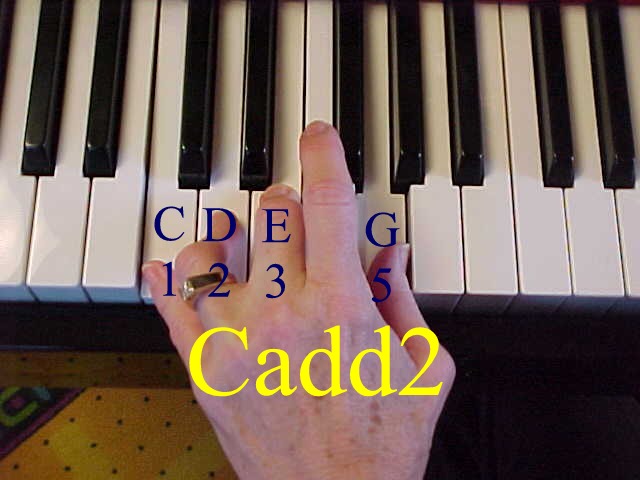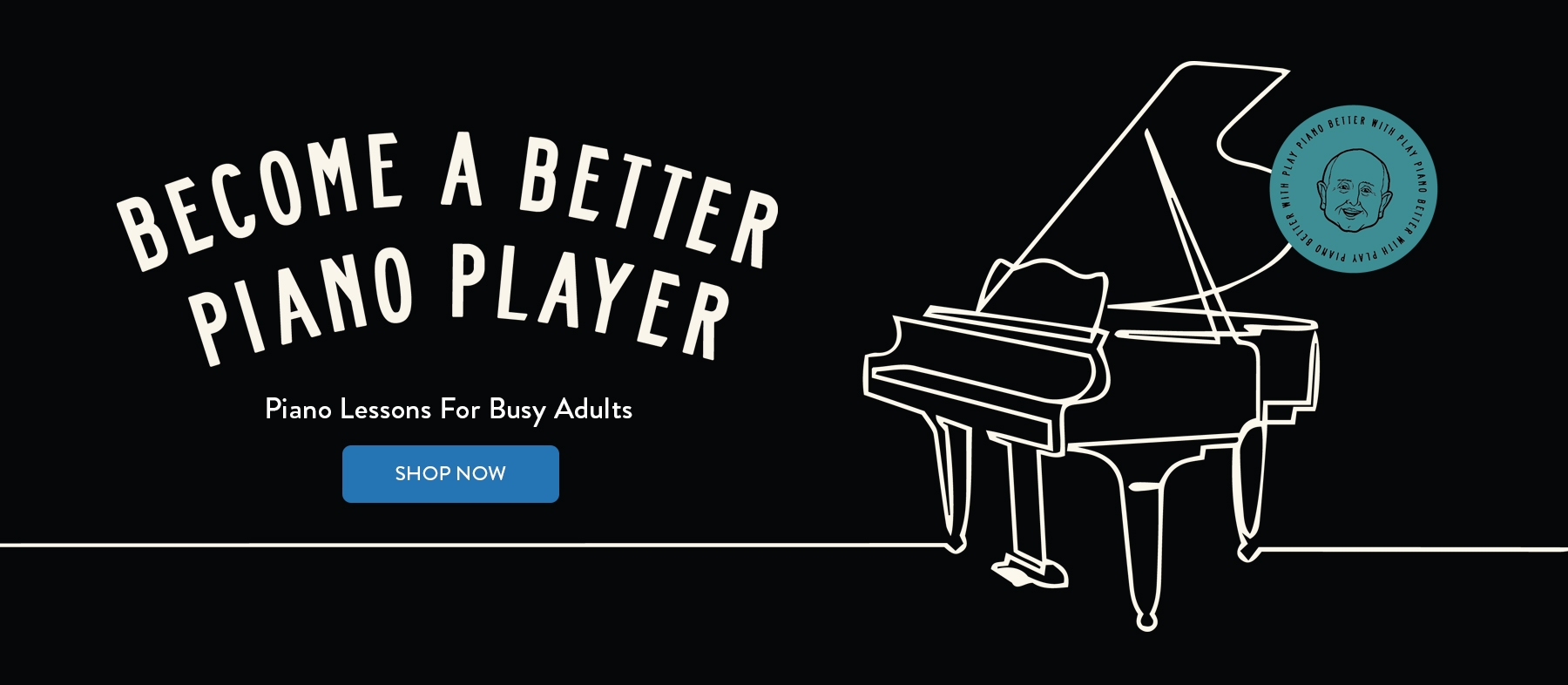Secrets of Exciting Chords & Chord Progressions: Lesson Seventeen
Alterations
So far we’ve covered chords from major to minor to diminished to augmented to 6ths to 7ths to maj7ths to 9ths to 11ths to 13ths — and last time we covered suspensions. I trust that you have been MASTERING each chord type as we’ve gone along. We’re almost through — almost to the point where we can apply what we’ve learned about chords to chord progressions — and that’s where the fun begins.
But it won’t be much fun if you can’t remember the chords you’ve learned, so keep going over and over and over them.
Just a couple more things you need to know about chords, and one of those things is that:
| Any chord can be altered through the use of a plus sign + or a minus sign – + means sharp — raise the note 1/2 step – means flat — lower the note 1/2 step |
For example, here is a C7 chord with a flat 5th. It is notated “C7-5”:
And here is a C7 chord with a sharp 5th, notated as C7+5:
And here is a C9th chord in second inversion with a flat 9th, notated C-9: (But don’t forget to play the low root — C — first. Otherwise you have a Gdim7 chord!)
And here we have a C11 chord, but the 11th is raised 1/2 step. So it is notated C+11:

Can you figure out what this chord might be? Take a stab at it, then I’ll tell you below:

Did you figure it out? Don’t feel bad if you didn’t — it’s a C+9. You would play a low root (C) first and hold it with your sustain pedal, then play this chord, which is in first inversion. This is an advanced voicing — we’re leaving the 5th of the chord out, so we have a “stack of 4ths”, which creates an open sound. Now that you know what it is, try it.
Sometimes — but not often — you’ll see a symbol that says “add 2”. That simply means to add the 2nd note of the scale (the scale of the chord you are playing) to the chord. The reason it is not called a 9th is because a 9th has a 7th under it, and this doesn’t. It is notated Cadd2 and looks like this:

That’s enough for this time. I don’t want you to get “musical indigestion”. Next time we’ll take a look at “slash chords” and see what they are made of, and then after that I think we’re ready to being learning about the wonderful & exciting world of progressions — the path chords take as they move from one to another.
Meanwhile, be sure to review all the previous lessons — from major triads to 13ths.
For a complete listing of courses that will help you greatly in your piano playing, click here.
If you haven’t yet taken my course on “How To Dress Up Naked Music On The Piano,” please check it out.




